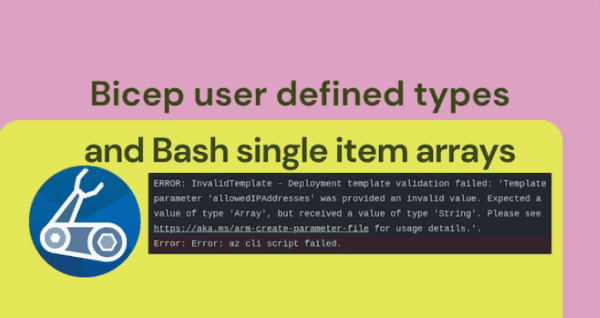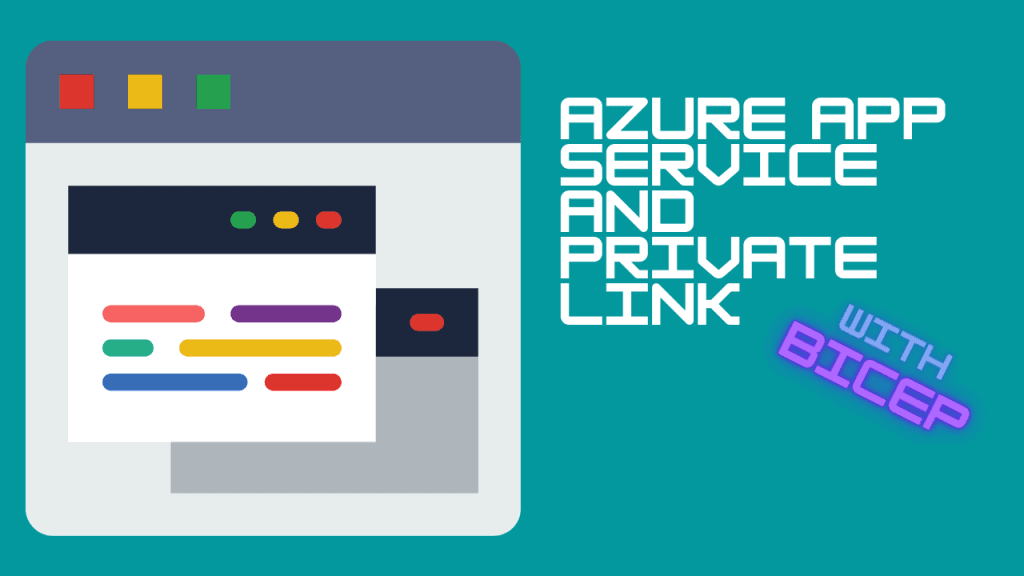
In one of my videos on my YouTube channel, I discuss Azure App Services with Private Link. The video describes how it works and provides an example of deploying the infrastructure with Bicep. The Bicep templates are on GitHub.
If you want to jump straight to the video, here it is:https://www.youtube.com/embed/yRIC2U-Vnts?version=3&rel=1&showsearch=0&showinfo=1&iv_load_policy=1&fs=1&hl=en&autohide=2&wmode=transparent
In the rest of this blog post, I provide some more background information on the different pieces of the solution.
Azure App Service
Azure App Service is a great way to host web application and APIs on Azure. It’s PaaS (platform as a service), so you do not have to deal with the underlying Windows or Linux servers as they are managed by the platform. I often see AKS (Azure Kubernetes Service) implementations to host just a couple of web APIs and web apps. In most cases, that is overkill and you still have to deal with Kubernetes upgrades, node patching or image replacements, draining and rebooting the nodes, etc… And then I did not even discuss controlling ingress and egress traffic. Even if you standardize on packaging your app in a container, Azure App Service will gladly accept the container and serve it for you.
By default, Azure App Service gives you a public IP address and FQDN (Fully Qualified Domain Name) to reach your app securely over the Internet. The default name ends with azurewebsites.net but you can easily add custom domains and certificates.
Things get a bit more complicated when you want a private IP address for your app, reachable from Azure virtual networks and on-premises networks. One solution is to use an App Service Environment. It provides a fully isolated and dedicated environment to run App Service apps such as web apps and APIs, Docker containers and Functions. You can create an internal ASE which results in an Internal Load Balancer in front of your apps that is configured in a subnet of your choice. There is no need to configure Private Endpoints to make use of Private Link. This is often called native virtual network integration.
At the network level, an App Service Environment v2, works as follows:
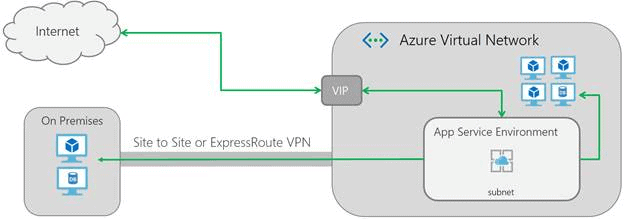
Looking at the above diagram, an ILB ASE (but also an External ASE) also makes it easy to connect to back-end systems such as on-premises databases. The outbound connection to internal resources originates from an IP in the chosen integration subnet.
The downside to ASE is that its isolated instances (I1, I2, I3) are rather expensive. It also takes a long time to provision an ASE but that is less of an issue. In reality though , I would like to see App Service Environments go away and replaced by “regular” App Services with toggles that give you the options you require. You would just deploy App Services and set the options you require. In any case, native virtual network integration should not depend on dedicated or shared compute. One can only dream right?
Note: App Service Environment v3, in preview at the time of this writing, provides a simplified deployment experience and also costs less. See App Service Environment v3 public preview – Azure App Service
As an alternative to an ASE for a private app, consider a non-ASE App Service that, in production, uses Premium V2 or V3 instances. The question then becomes: “How do you get a private IP address?” That’s where Private Link comes in…
Azure Private Link with App Service
Azure Private Link provides connectivity to Azure services (such as App Service) via a Private Endpoint. The Private Endpoint creates a virtual network interface card (NIC) on a subnet of your choice. Connections to the NICs IP address end up at the Private Link service the Private Endpoint is connected to. Below is an example with Azure SQL Database where one Private Endpoint is mapped, via Azure Private Link, to one database. The other databases are not reachable via the endpoint.
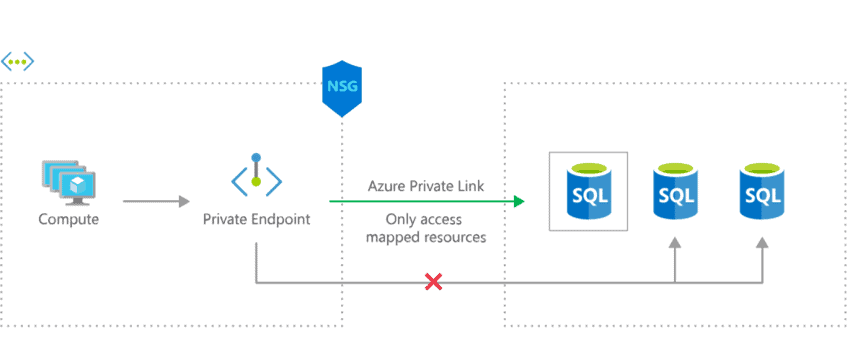
To create a regular App Service that is accessible via a private IP, we can do the same thing:
- create a private endpoint in the subnet of your choice
- connect the private endpoint to your App Service using Private Link
Both actions can be performed at the same time from the portal. In the Networking section of your App Service, click Configure your private endpoint connections. You will see the following screen:
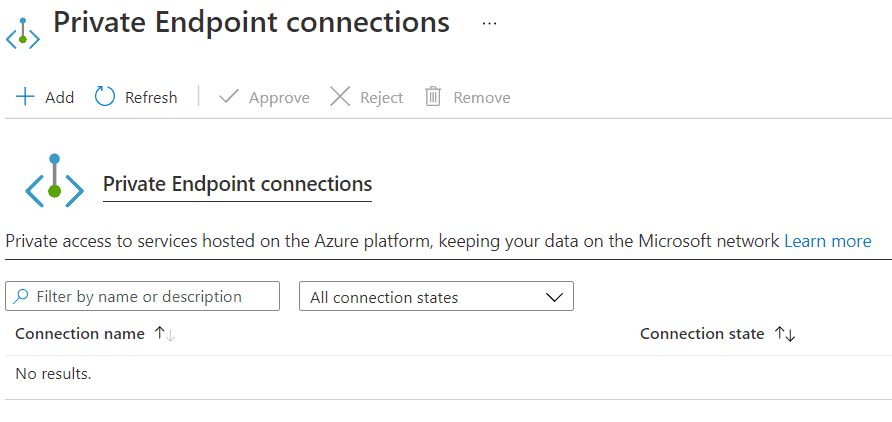
Now click Add to create the Private Endpoint:
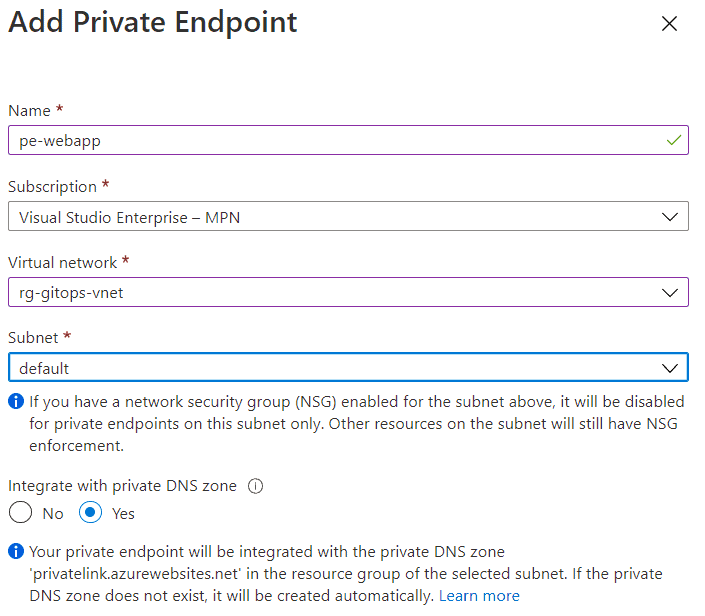
The above creates the private endpoint in the default subnet of the selected VNET. When the creation is finished, the private endpoint will be connected to App Service and automatically approved. There are scenarios, such as connecting private endpoints from other tenants, that require you to approve the connection first:

When you click on the private endpoint, you will see the subnet and NIC that was created:

From the above, you can click the link to the network interface (NIC):

Note that when your delete the Private Endpoint, the interface gets deleted as well.
Great! Now we have an IP address that we can use to reach the App Service. If you use the default name of the web app, in my case https://web-geba.azurewebsites.net, you will get:
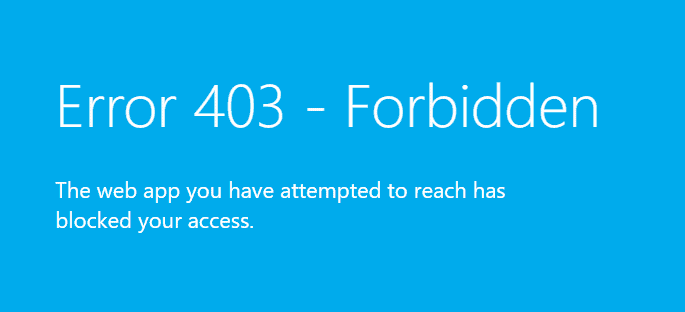
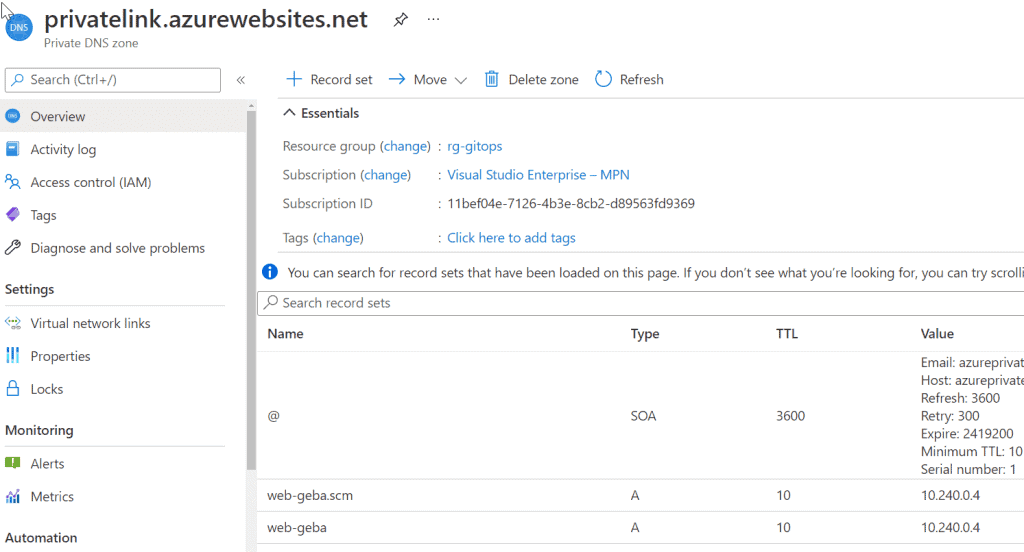
You might wonder why this is a private DNS zone for privatelink.azurewebsites.net? From the moment you enable private link on your web app, Microsoft modifies the response to the DNS query for the public name of your app. For example, if the app is web-geba.azurewebsites.net and you query DNS for that name, it will respond with a CNAME of web-geba.privatelink.azurewebsites.net. If that cannot be resolved, you will still get the public IP but that will result in a 403.
In my case, as long as the DNS servers I use can resolve web-geba.privatelink.azurewebsites.net and I can connect to 10.240.0.4, I am good to go. Note however that the DNS story, including Private DNS and your own DNS servers, is a bit more complex that just checking a box! However, that is not the focus of this blogpost so moving on…
Note: you still need to connect to the website using https://web-geba.azurewebsites.net in your browser
Outbound connections to internal resources
One of the features of App Service Environments, is the ability to connect to back-end systems in Azure VNETs or on-premises. That is the result of native VNET integration.
When you enable Private Link on a regular App Service, you do not get that. Private Link only enables private inbound connectivity but does nothing for outbound. You will need to configure something else to make outbound connections from the Web App to resources such as internal SQL Servers work.
In the network configuration of you App Service, there is another option for outbound connectivity to internal resources – VNet integration.
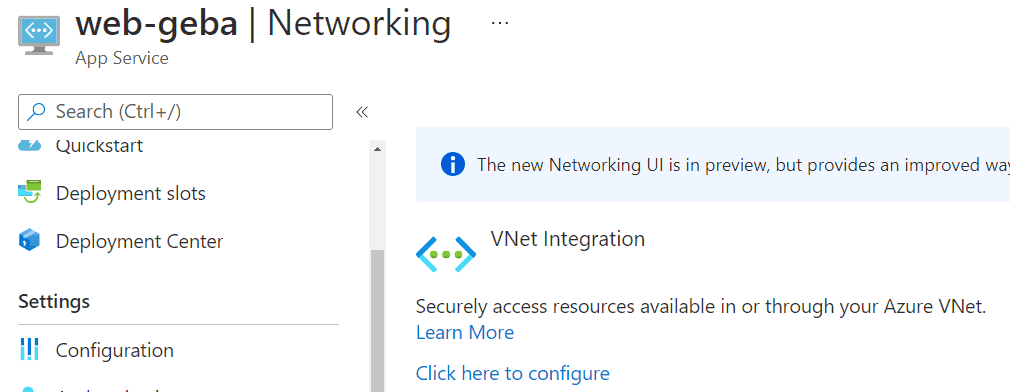
In the Networking section of App Service, find the VNet integration section and click Click here to configure. From there, you can add a VNet to integrate with. You will need to select a subnet in that VNet for this integration to work:

There are quite some things to know when it comes to VNet integration for App Service so be sure to check the docs.
Private Link with Azure Front Door
Often, a web app is made private because you want to put a Web Application Firewall (WAF) in front of the app. Typically, that goal is achieved by putting Azure Application Gateway (AG) with WAF in front of an internal App Services Environment. As as alternative to AG, you can also use virtual appliances such as Barracuda WAF for Azure. This works because the App Services Environment is a first-class citizen of your Azure virtual network.
There are multiple ways to put a WAF in front of a (non-ASE) App Service. You can use Front Door with the App Service as the origin, as long as you restrict direct access to the origin. To that end, App Services support access restrictions.
With Azure Front Door Premium, in preview at the time of this writing (June 2021), you can use Private Link as well. In that case, Azure Front Door creates a private endpoint. You cannot control or see that private endpoint because it is managed by Front Door. Because the private endpoint is not in your tenant, you will need to approve the connection from the private endpoint to your App Service. You can do that in multiple ways. One way is Private Link Center Pending Connections:
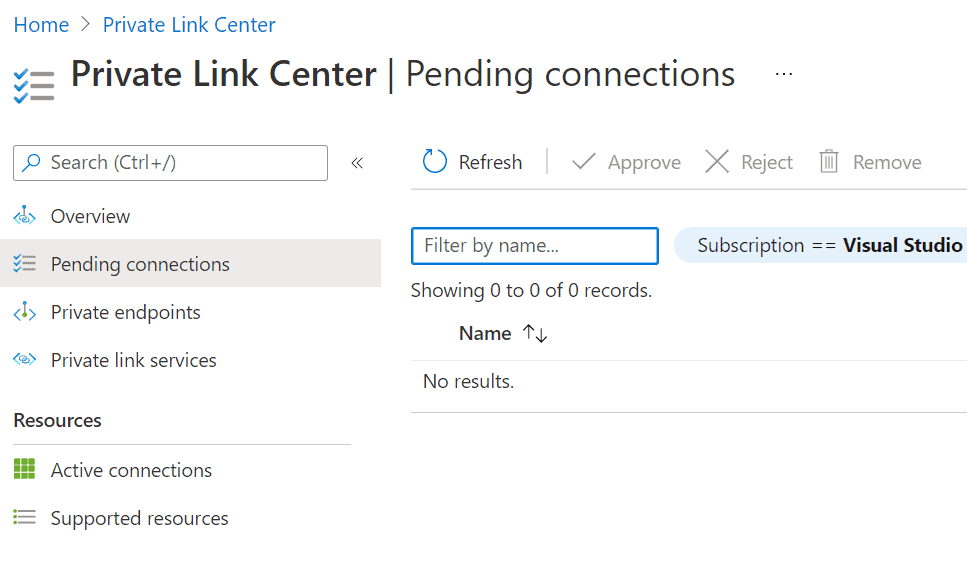
If you check the video at the top of this page, this is shown here.
Conclusion
The combination of Azure networking with App Services Environments (ASE) and “regular” App Services (non-ASE) can be pretty confusing. You have native network integration for ASE, private access with private link and private endpoints for non-ASE, private DNS for private link domains, virtual network service endpoints, VNet outbound configuration for non-ASE etc… Most of the time, when I am asked for the easiest and most cost-effective option for a private web app in PaaS, I go for a regular non-ASE App Service and use Private Link to make the app accessible from the internal network.
This blog is part of Azure Week. Check it out for more great content!
About the Author:
Technology at the intersection of cloud-native infrastructure and applications & Microsoft Azure MVP
Reference:
Baeke, G. (2021). Azure App Services with Private Link. Available at: https://blog.baeke.info/2021/06/22/azure-app-services-with-private-link/ [Accessed: 6th July 2021].

